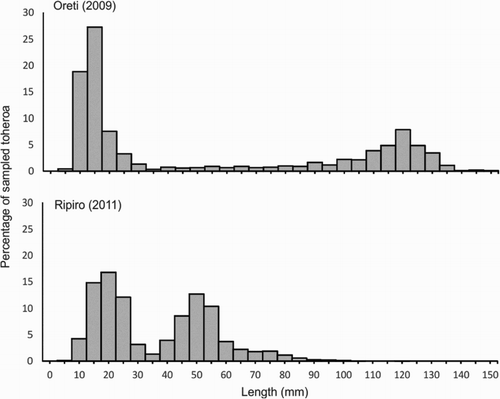Figures & data
Figure 1. Distribution of toheroa (Paphies ventricosa) in New Zealand. Major populations are underlined. Figure reproduced from Redfearn (Citation1974).
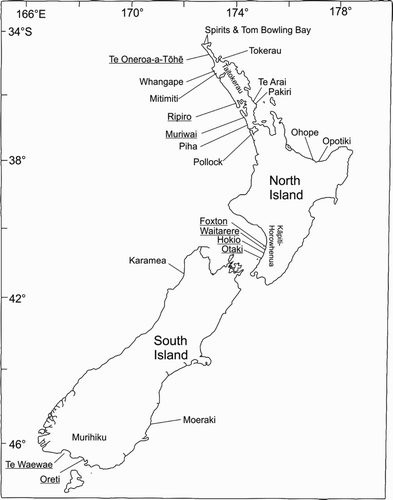
Table 1. Summary of factors considered to potentially be preventing the recovery of toheroa, the mechanisms by which these factors might affect toheroa recovery, possible management actions to address factors and relevant toheroa literature.
Figure 2. (Clockwise from top left) Toheroa collected from Hokio Beach during the September open day in 1977 (EP/1077/3679/36-F. Alexander Turnbull Library (ATL)); Three women from Northland, photographed ca. 1910–1930s, shelling toheroa meat into tin cans for a toheroa cannery. Their kete (flax bags) are full of shellfish, and they are surrounded by empty shells (1/1-026522-G. ATL); Harvesting toheroa on a Northland beach, ca. 1920s–1930s (1/1-010575-G. ATL); Toheroa being dug from trenches on Muriwai Beach, 1962. (AAQT 6539, A70987. Archives New Zealand, The Department of Internal Affairs, Te Tari Taiwhenua).
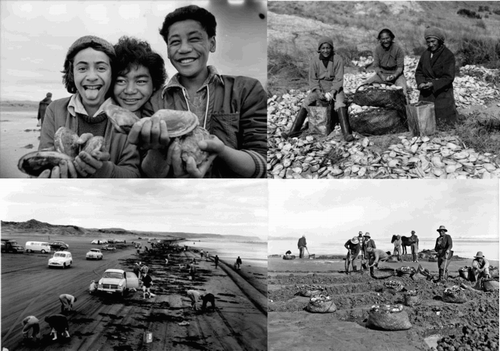
Figure 3. Total commercial production of toheroa (Paphies ventricosa; tonnes of canned toheroa product) from canneries at Northland Beaches (Te Oneroa-a-Tōhē, Ripiro and Te Rangatira) from 1928 to 1969. Data from Marine Department Annual records for 1928–1940 and 1943–1948 tabulated by Cassie (Citation1955) and for 1941–1942 and 1949–1969 graphed by Redfearn (Citation1974). Figure reproduced from Williams, Sim-Smith, et al. (Citation2013).
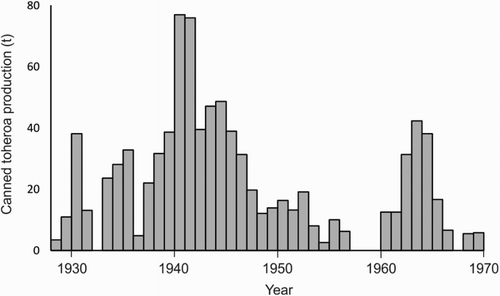
Figure 4. Population estimates of large adult toheroa (Paphies ventricosa) at Te Oneroa-a-Tōhē (≥75 mm; 1933–2010), Ripiro (≥ 75 mm; 1938–2011), Oreti (≥80 mm and ≥100 mm; 1972–2009) and Bluecliffs Beach (≥75 mm and ≥ 100 mm; 1966–2009) from 1930 to 2015. Figures reproduced from Williams, Ferguson, et al. (Citation2013), Beentjes (Citation2010a, Citation2010b) and Berkenbusch et al. (Citation2015).
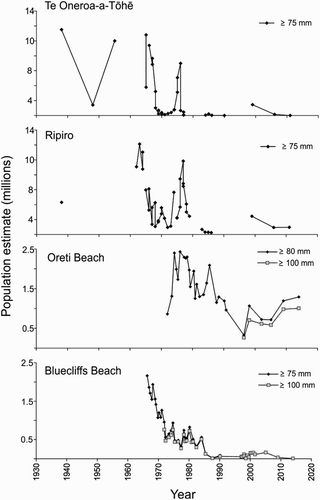
Figure 5. Internal anatomy of toheroa (Paphies ventricosa), with left valve and mantle removed. Figure reproduced from Rapson (Citation1952).
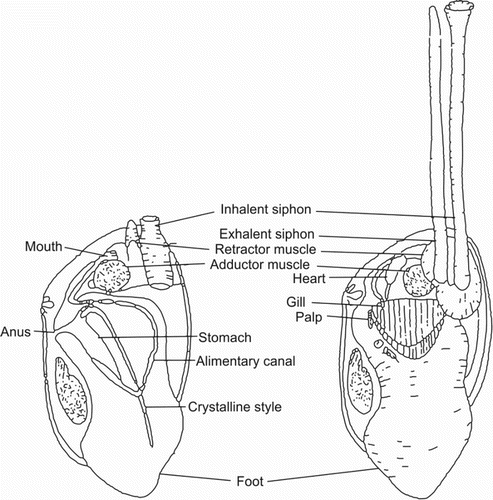
Figure 6. Left valves of toheroa (Paphies ventricosa) shells collected at Ripiro (153 mm), Oreti (108 mm) and Mt Maunganui (70 mm) beaches.
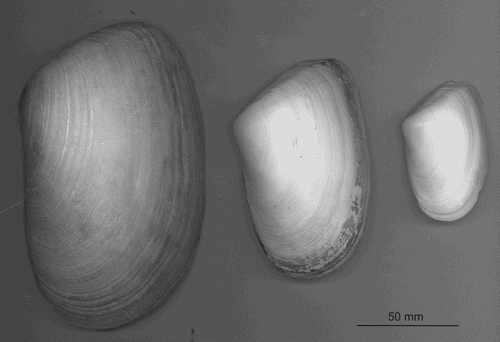
Figure 7. Length-frequency distribution of toheroa sampled during the 2009 at Oreti (n = 1221; Beentjes Citation2010b) and in 2011 survey at Ripiro (n = 7578, Williams, Ferguson, et al. Citation2013).
